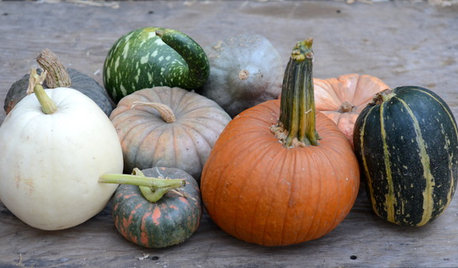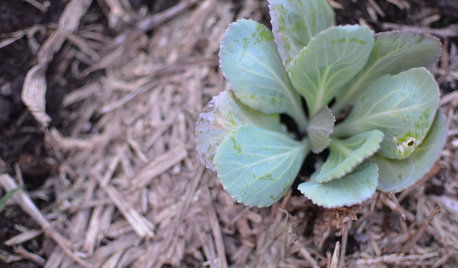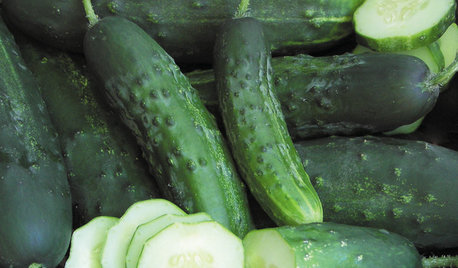Squash vine borer sightings
gamebird
14 years ago
Related Stories

EDIBLE GARDENSSummer Crops: How to Grow Squash
Almost foolproof and with cheerful flowers, squash comes in a wide range of varieties to plant in spring
Full Story
GARDENING GUIDESJoin Us for a Parade of Pumpkins
Fall eye candy: Get to know 9 winter squash varieties, including Long Island Cheese and Blue Hubbard
Full Story
REGIONAL GARDEN GUIDESMid-Atlantic Gardener's September Checklist
Squash, anyone? Cool-season veggies are suiting up for the garden, while summer's last blooms are winding down
Full Story
EDIBLE GARDENSSummer Crops: How to Grow Pumpkins
Start in spring to grow your own fall decorations and have plenty left for pies
Full Story
SUMMER FRUITS AND VEGETABLESSummer Crops: How to Grow Cucumbers
Pick a peck for pickles or opt for fewer and raw — no matter how you slice them, cucumbers are great for summer gardens small to large
Full Story
GARDENING GUIDES10 Easy Edibles for First-Time Gardeners
Focus on these beginner-friendly vegetables, herbs, beans and salad greens to start a home farm with little fuss
Full Story
GARDENING GUIDESOrganic Matters: Thwart Insect Pests With Trap Crops
Add a few sacrificial plants to your garden to lure insects away from the harvest
Full Story
GARDENING GUIDESSmall Carpenter Bees Are Looking for a Home in Your Plant Stems
Provide flowers and nesting sites in your garden for this beautiful, tiny, metallic blue wild bee — your plants will thank you
Full Story
GARDENING GUIDES10 Tips for Beginning Gardeners
With a simple sketch, basic tools and the right plants, you’ll be on your way to growing your first flowers or edibles
Full Story
GARDENING GUIDESTexas Gardener's May Checklist
Be especially water wise this month as you sow seeds, tend to your lawn and plant edibles, grasses and flowers
Full StoryMore Discussions


Okiedawn OK Zone 7
okiefamily
Related Professionals
Maple Valley Landscape Architects & Landscape Designers · Richmond Heights Landscape Architects & Landscape Designers · Woodinville Landscape Architects & Landscape Designers · Addison Landscape Contractors · Cicero Landscape Contractors · Manhattan Landscape Contractors · Wailuku Landscape Contractors · Waldorf Landscape Contractors · Silver Firs Landscape Contractors · Braintree Decks, Patios & Outdoor Enclosures · Carmel Decks, Patios & Outdoor Enclosures · Draper Decks, Patios & Outdoor Enclosures · Grain Valley Decks, Patios & Outdoor Enclosures · Huntington Decks, Patios & Outdoor Enclosures · Roanoke Decks, Patios & Outdoor EnclosuresOkiedawn OK Zone 7
okiefamily
christopherb
gamebirdOriginal Author
Okiedawn OK Zone 7